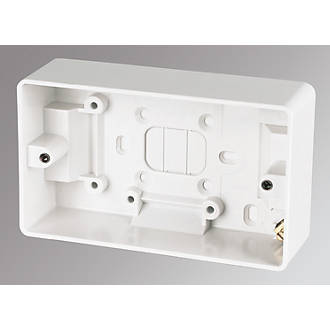jeallen01
Specialist Contributor
- Joined
- Oct 12, 2003
- Messages
- 6,674
- Reaction score
- 2,630
- Points
- 113
- My Satellite Setup
- See Signature
- My Location
- Somewhere in England (possibly?)!
Afternoon.
As some might remember, when I installed the various cables from the dishes at the end of the garden to the house mid 2016, I fitted Smart Priority Switches (SPS) about 1/2 way along the cables, and I also installed line amps (Axing SVS 2-01) on the input side of the switches to try to compensate for both switch and cable losses. I put the amps there because "received wisdom" from various sources indicated that this should be the best place - and not actually at the dish ends of the cables.
However, the experience with another line amp at the far end of the cable to the 1090MHz antenna for the SDR unit indicated that there was quite a lot of signal strength to be gained by doing that (not withstanding that I later had two SMArt SDR unit failures which might/might not have been caused by the DC power injection on the SDR end of the cable - that's still "work in progress" to find out what happened & why. Now got the 2nd replacement unit from NooElec and will run it without the amp/dc injection for the time being!)
Anyway, this morning, I removed the sat line amps from the SPS locations and remounted them immediately on the outputs of the Inverto Black Twin Ultra on the Triax dish, and then rechecked the Signal Strength & Quality and general reception on weaker sats like 31.5W & 7W (using ProgDVB V7.17.3 with the DVBS952 card in the X275 - now in the lounge) as compared with what I was getting a few days ago.
Can't give exact quantitative indications of the improvements, but the indicated Signal Strength required to open weak channels appears to have decreased, there are slight improvements in SQ, and stations that do open tend to do so more quickly and cleanly.
Anyone else have something to contribute on this subject?
As some might remember, when I installed the various cables from the dishes at the end of the garden to the house mid 2016, I fitted Smart Priority Switches (SPS) about 1/2 way along the cables, and I also installed line amps (Axing SVS 2-01) on the input side of the switches to try to compensate for both switch and cable losses. I put the amps there because "received wisdom" from various sources indicated that this should be the best place - and not actually at the dish ends of the cables.
However, the experience with another line amp at the far end of the cable to the 1090MHz antenna for the SDR unit indicated that there was quite a lot of signal strength to be gained by doing that (not withstanding that I later had two SMArt SDR unit failures which might/might not have been caused by the DC power injection on the SDR end of the cable - that's still "work in progress" to find out what happened & why. Now got the 2nd replacement unit from NooElec and will run it without the amp/dc injection for the time being!)
Anyway, this morning, I removed the sat line amps from the SPS locations and remounted them immediately on the outputs of the Inverto Black Twin Ultra on the Triax dish, and then rechecked the Signal Strength & Quality and general reception on weaker sats like 31.5W & 7W (using ProgDVB V7.17.3 with the DVBS952 card in the X275 - now in the lounge) as compared with what I was getting a few days ago.
Can't give exact quantitative indications of the improvements, but the indicated Signal Strength required to open weak channels appears to have decreased, there are slight improvements in SQ, and stations that do open tend to do so more quickly and cleanly.
Anyone else have something to contribute on this subject?

